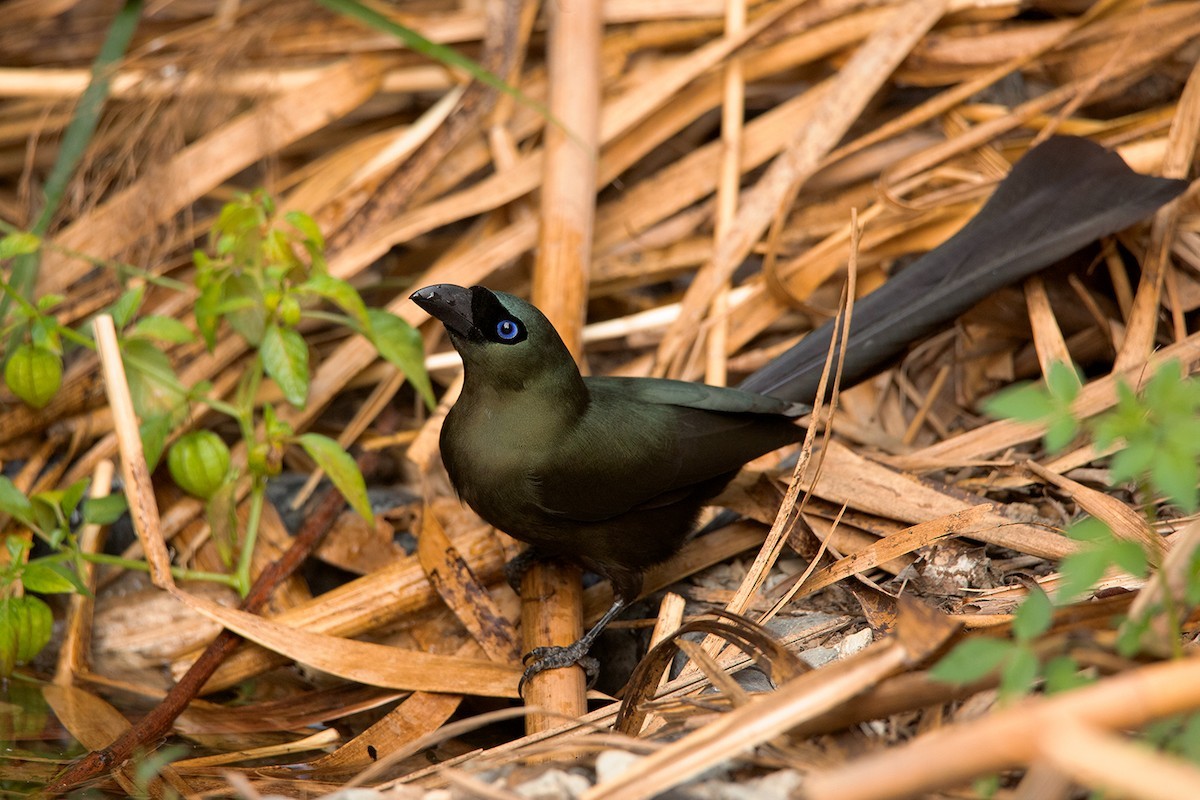Racket-tailed Treepie
A species of Hooded and Racket-tailed Treepies Scientific name : Crypsirina temia Genus : Hooded and Racket-tailed Treepies
Racket-tailed Treepie, A species of Hooded and Racket-tailed Treepies
Botanical name: Crypsirina temia
Genus: Hooded and Racket-tailed Treepies
Content
Description General Info
 Photo By Ayuwat Jearwattanakanok
Photo By Ayuwat Jearwattanakanok Description
The racket-tailed treepie (Crypsirina temia) is an Asian treepie, a member of the crow family, Corvidae. It has a velvety-black forehead of short, plush black feathers with the rest of the bird being an oily green colour, though appearing black in dim light. The tail feathers which in this species are long and broaden at the tail's end are black also with a greenish tinge, as are the wings. The iris of the bird is a turquoise-blue darkening towards the pupil to a very deep or near black. The bill, legs and feet are black. This bird occurs in southern Burma (Myanmar), Thailand, Indo-China, Sumatra, Java and Bali in scrub and secondary growth, open fields and gardens, bamboo thickets and open forest often near villages. It almost always feeds in trees (arboreal) never feeding from the ground though coming down to bathe on occasion. It moves through the trees with great agility and uses its remarkable tail as a balancing organ. It eats mainly insects and fruit. A cup shaped nest is built in bamboo or shrubs especially thorny ones often surrounded by open grassy areas and normally lays 2–4 eggs. The voice is usually described as harsh and unattractive. It has several described calls but a whining call is often heard. 
Size
33 cm
Nest Placement
Tree
Feeding Habits
Racket-tailed Treepie, an omnivore, feeds on invertebrates, especially large beetles, fruits, berries, and occasionally small birds and lepidopteran pupae. It forages in foliage and lower to middle tree canopies, often alone or in small groups, skillfully climbing and rarely descending to the ground.
Habitat
The habitat of racket-tailed Treepie primarily consists of lowland open forests. These environments typically feature a complex mosaic of clearings near villages and the peripheries of plantations. Additionally, racket-tailed Treepie thrives in areas of mixed secondary growth, which often includes the edges of mangrove forests. These birds are adapted to live in regions where such ecological conditions are prevalent, favoring the general habitat diversity these areas offer.
Dite type
Omnivorous
General Info
Feeding Habits
Bird food type

 Photo By Ayuwat Jearwattanakanok
Photo By Ayuwat Jearwattanakanok Scientific Classification
Phylum
Chordates Class
Birds Order
Perching birds Family
Crows and jays Species
Racket-tailed Treepie